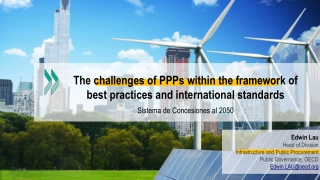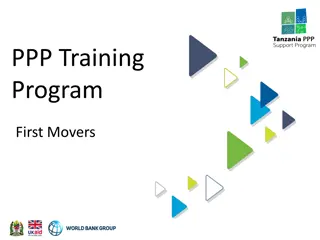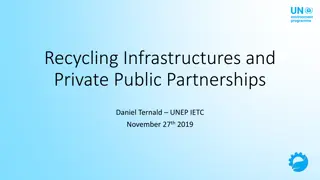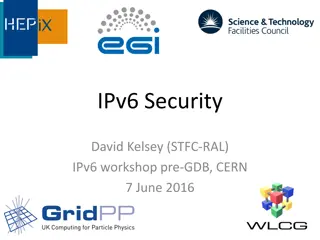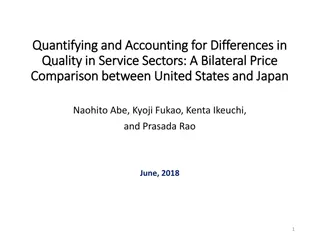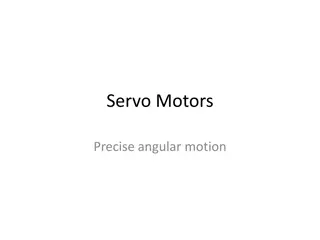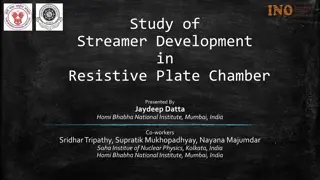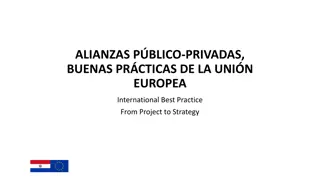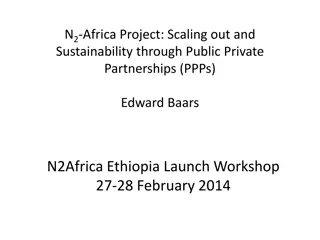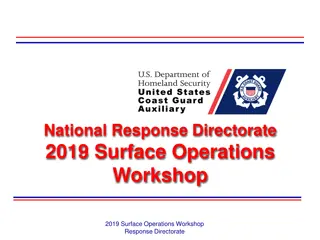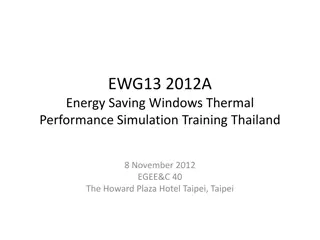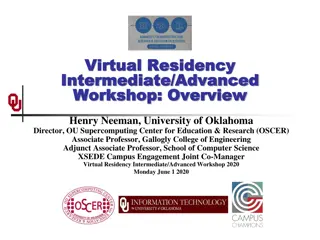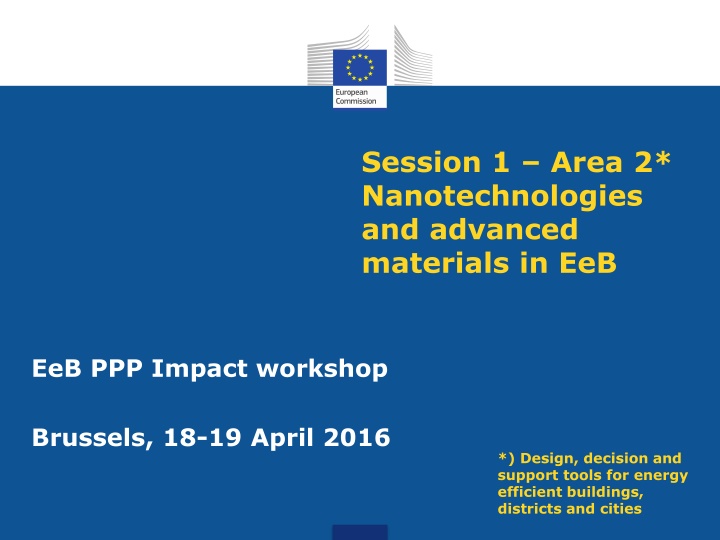
Technological Advances in Energy-Efficient Building Design and Support Tools
This content outlines the innovative strides in nanotechnologies and advanced materials applied to energy-efficient building design, specifically focusing on healthcare districts. The main aim is to significantly reduce energy use and CO2 emissions within a decade by creating semantic building models, interconnected BIM lifecycle frameworks, and decision-support tools. The STREAMER design workflow and key results related to design processes are highlighted, emphasizing the expected technological and economic/social impacts of the advancements.
Download Presentation

Please find below an Image/Link to download the presentation.
The content on the website is provided AS IS for your information and personal use only. It may not be sold, licensed, or shared on other websites without obtaining consent from the author. If you encounter any issues during the download, it is possible that the publisher has removed the file from their server.
You are allowed to download the files provided on this website for personal or commercial use, subject to the condition that they are used lawfully. All files are the property of their respective owners.
The content on the website is provided AS IS for your information and personal use only. It may not be sold, licensed, or shared on other websites without obtaining consent from the author.
E N D
Presentation Transcript
Session 1 Area 2* Nanotechnologies and advanced materials in EeB EeB PPP Impact workshop Brussels, 18-19 April 2016 *) Design, decision and support tools for energy efficient buildings, districts and cities
Semantics-driven design for energy-efficient buildings integrated in healthcare districts
Scientific/Technical goals of the supported area Main aim: 50% reduced energy use and CO2 emission of healthcare districts in 10 years Achievements: Create generic semantic BIM+GIS typology models of Energy- efficient Buildings in healthcare districts Create a framework for BEM (Building Energy Model) lifecycle model inter-connecting BIM, BAM, BOOM Create a design decision-support tool as an interactive tool which accommodates: BIM+GIS models; KPIs for energy, life- cycle cost, fuctional quality; and stakeholder requirements
Results related to design workflow Dashboard (decision support tool) KPI tools (energy quality cost) Design configurator design validator Data requirements checking Product Lifecycle Management Semantic labeling methodology Design rules (rooms MEP fa ade technology) Participatory design process
Expected technological impacts Parametric design solutions and templates for a range of building types that can be configured and validated for each unique project. A set of interoperable tools that enable designers and their stakeholders to gain insight in the performance of hospitals, more specifically in terms of energy usage, lifecycle costing, and quality. Contribution to standardisation
Expected Economic/Social impacts Improvements in the process of buildings design and control in order to facilitate decision-making before the construction which results in a greater ability to positively impact project costs and functions, supported by a dashboard that enables continuous evaluation of the most important KPIs. Workforce trainings to a) foster BIM as way of working b) to raise interest in the use of STREAMER results
Expected Environmental impacts up to 50% reduction of energy consumption of healthcare districts in the next 10 years, and sustainable transformation of healthcare buildings and neighborhoods in EU
Technical cross-cutting issues What technical cross-cutting issues are addressed in your project that would increase the overall impact? Interoperability (and/or standardization) of software tools (design tools, simulation tools) Interoperability of KPIs and approaches between projects (ie, a user can combine results from 2 or more projects without great engineering effort or conceptual adaptations) Strengthening or dismissing technical approaches by peer review
Non-technical cross-cutting issues What non-technical cross-cutting issues are addressed in your project that would increase the overall impact? Exploitation including IPR issues Two ESS were held; KERs identified; ongoing discussion and definition Further development of results outside project scope For at least one result this is now explored One other result to be included in greater scheme of tools Standardization Activities have just started Involving Implementer Communities Activities have just started; aimed at review, and at creating a user base for the project results including commercial opportunities
Synergies and benefits of clustering What cluster activities have you undertaken in the last year / are you planning to undertake? Explore options for an Open EeB software platform Exchange results and insights How have cluster activities added / would add value to your projects? Understanding of the main drivers of energy use and viable approaches including peer review of approaches Pointers to relevant software and algorithms Delimiting project scope How can cluster activities help exploitation of results after the projects end? Combination of software results: a common repository including management and marketing activities; possibly exploitation
Summary / way forward Project goals according to plan results identified and exploitation addressed Exchange with cluster projects should be reinforced now that results are becoming more and more clear Productization (exploitation strategy) is still an unknown exchange with cluster projects could help here as well


